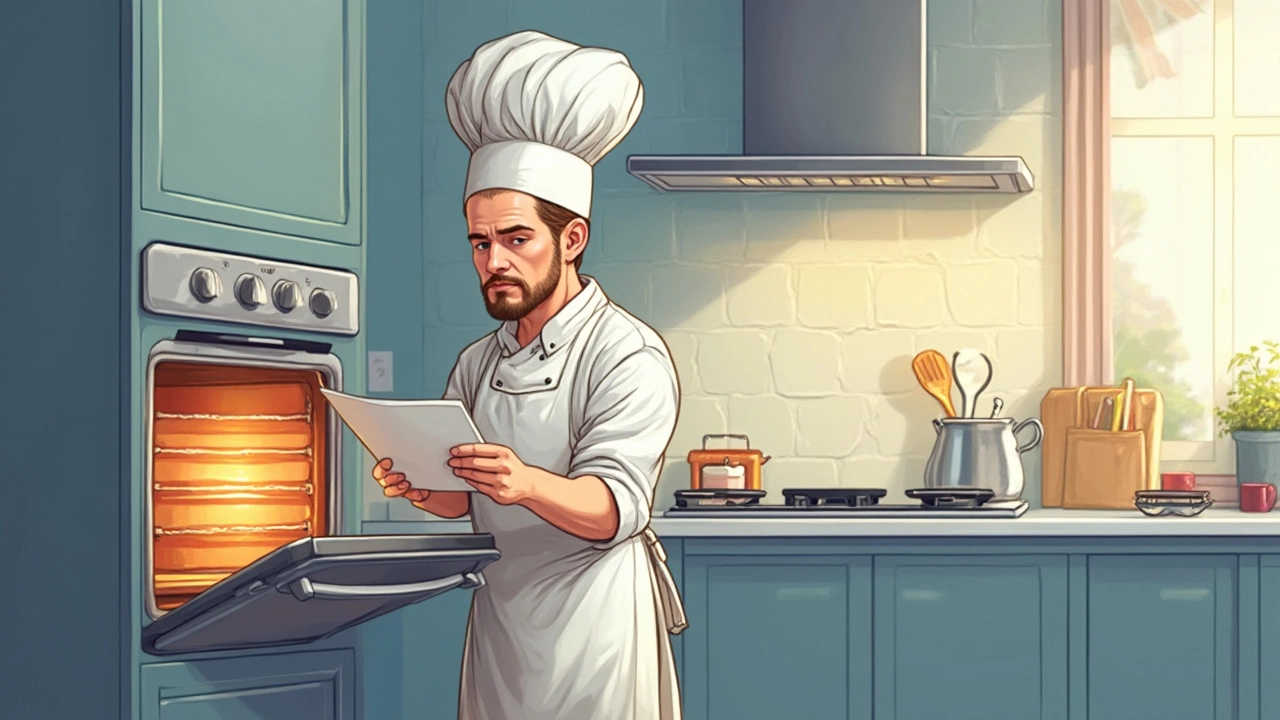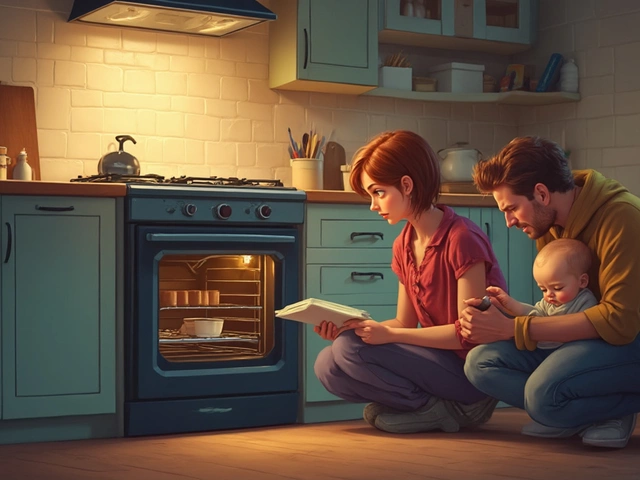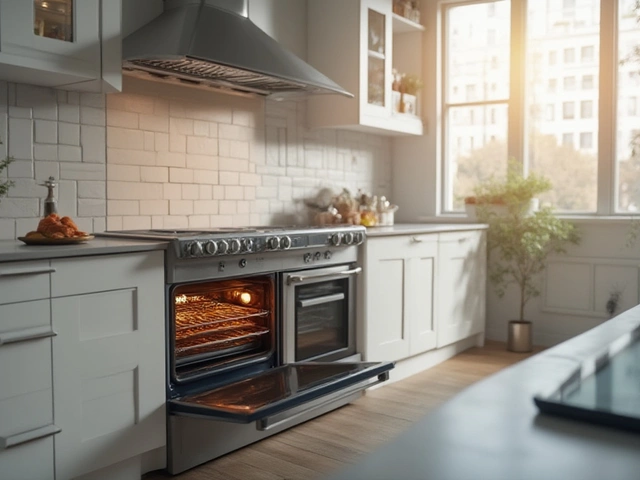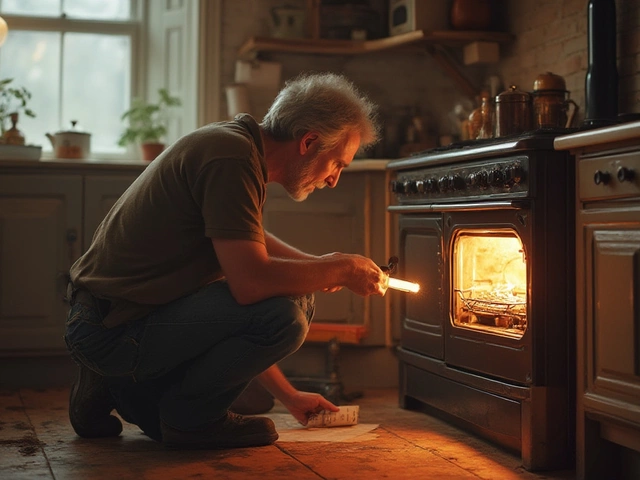Ovens are like the workhorses of the kitchen, tirelessly baking, roasting, and even just keeping things warm. But what happens when they start acting up? An oven on the fritz can throw a wrench in your culinary plans, but most issues are easier to fix than you'd think. Let's get you back to cooking with some practical tips.
One of the top gripes folks have is uneven cooking. Imagine baking cookies, and some end up raw while others get crispy. That's probably a temperature issue. The culprit could be a thermostatic sensor or a misconceiving element. You might want to think about getting a simple oven thermometer to double-check that the heat’s where it should be.
Uneven Cooking
Ever tossed a pizza in the oven, only to find one side perfectly golden while the other remains pale? This frustrating occurrence can often be chalked up to uneven cooking, a common gripe among everyday chefs. There are a few reasons your oven might be pulling this trick.
First off, let's consider the temperature calibration. Sometimes, the built-in thermostat just isn't precise. One way to check is to use an inexpensive oven thermometer placed in different spots in your oven. If one side is consistently cooler, there's your answer. You can attempt a DIY recalibration if your oven’s model allows it, but sometimes it's best to bring in a professional for this task.
Another possibility is the oven's heating element. In electric ovens, these elements can wear down over time, with certain parts failing to heat as effectively. Check if they're glowing uniformly when turned on. Any dark spots mean you'll likely need a replacement.
- Switch the positions of your dishes midway through baking. It might not solve the root problem, but it keeps dinner on the table.
- Rotate your baking sheets or pans halfway through so each side gets the same exposure.
- If your budget allows, consider an oven with a convection setting which can promote more even cooking.
Whatever the cause, understanding these fundamental aspects of your oven can save you from many headaches. Equipped with these insights, you’re one step closer to even those golden, perfectly-baked goods every time.
Oven Not Heating
So, your oven's not heating up at all? That's a major bummer, especially when you're all set to bake that lasagna for dinner. But before you panic and call in the pros, let's walk through some common causes and fixes that might save the day.
First off, if your oven isn't heating, the problem could be with the power supply. Check that it's plugged in securely. Sounds basic, but sometimes a bump can loosen the cord. If your oven is hardwired, it's worth checking the circuit breaker to see if it’s tripped.
Next on the list is the heating element. Pretty crucial, right? For electric ovens, the baking element at the bottom of the oven and the broil element at the top need to be intact. Look for visible damage like burns or breaks. If either looks busted, it's probably time for a replacement.
If your model is gas, your issue might be the igniter. A weak igniter won’t light the gas, leaving you with no heat. Listen for a clicking sound when you turn your oven on—no sound might mean the igniter’s kaput.
- Inspect the heating elements for damage.
- Test electric connections or reset the breaker.
- For gas models, ensure the igniter clicks.
Finally, malfunctioning thermostats can cause trouble. They keep the temperature stable, but if they go rogue, your oven might not heat at all, or it could heat unevenly. Thermostat issues usually mean it's time for a technician.
Remember, tackling these basic steps can often get your oven back up running without much hassle. But if things are still cold after trying these tricks, it might be time to call in the experts.
| Issue | Quick Check |
|---|---|
| No Power | Check plug or breaker |
| Electric Element | Look for visible damage |
| Gas Igniter | Listen for clicking sound |
Strange Noises
Ever heard your oven making weird noises and thought, 'Is it about to take off or something?' You're not alone. Strange noises can be unnerving, but they often have logical explanations.
If your oven's making banging or rattling sounds, it might be due to loose or broken parts. Specifically, a fan blade could be the reason. If the fan blade is loose, it can hit other parts, causing that loud banging. Tightening or replacing the fan might be all that's needed.
Now, a hissing or sizzling noise often points to an electrical issue. This isn't something to ignore. If you hear this, check for signs of arcing (like blackened spots or a smoky smell) around the heating elements or control panel. Replacing a damaged element might remedy this.
Sometimes ovens hum. A low hum can be normal, but if it sounds like it's struggling, it could signal an issue with the motor. If the hum is new or unusually loud, you might want to inspect the cooling fan or blower motor.
Engaging in some DIY fixes can be tempting, but with electrical issues or if you're not comfortable tinkering with your oven, giving a trusted repair service a call is smart. It's always better to be safe than sorry.

Door Won't Shut
So, you've got this annoying problem where the oven door just won't close properly. It's more than just a nuisance because an unsealed oven door messes with cooking times and can even mess up the entire meal prep. Let's look at what's going on and, more importantly, how to fix it.
The most common reason for a door that won't shut is a problem with the door hinges. They might be misaligned or just worn out. You'd be surprised at how simple it can be to check and adjust them. First, turn off your oven and let it cool down. Safety first, right?
Once it's cool, take a closer look at those hinges. If they're misaligned, try gently adjusting them back into place—or giving them a good clean; sometimes, food debris can block the hinges from moving freely. If that doesn't work or they look damaged, it might be time to replace them.
Another thing that could cause door problems is the door seal or gasket. If it's worn out or torn, it won't make a proper seal when the door closes. Luckily, replacing a gasket is pretty straightforward and can save you a lot of hassle.
- Check the hinges for alignment and debris.
- Inspect the gasket for any signs of wear or damage.
- Replace worn-out gaskets or faulty hinges if needed.
If none of these tricks work, it's probably time to bring in the experts. Much as we love a good DIY solution, some issues call for professional know-how.
Funky Smells
Ovens can dish out some pretty weird smells, and it's enough to make you wrinkle your nose and lose your appetite. If you've ever wondered why your kitchen suddenly smells like a science experiment, you’re not alone. Weird odors from your oven often signal that something’s up inside.
A common reason for funky smells is food residue stuck in the oven. Think about it. Grease from roast chicken, or gooey cheese drips from a pizza—all these can burn and create that signature smoke alarm smell. Start by giving your oven a good clean. It's not just about looks; it's about function too: a clean oven cooks better.
If cleaning doesn't solve the issue, there might be a more technical reason. Check if any plastic or packaging accidentally got left inside. It happens more than you'd think and can create a burnt plastic smell. Also, consider chemical residues from cleaning products. If your oven wasn’t properly rinsed after cleaning, the next time you bake a cake, it might come with an unexpected scent!
Sometimes, new ovens have a "burn-in" smell when you first start using them. That’s normal, but if it doesn't go away after a few uses, it might be a sign to look deeper. Make sure to refer to the manual for specific cleaning recommendations or run an empty cycle to help.
Here's a quick tip: using a tried-and-tested mixture of water and vinegar during the cleaning process can help neutralize odors. Just make sure to allow your oven to dry out completely after the cleaning to avoid any lingering vinegar smell!
When to Call a Pro
So, you're knee-deep in oven troubles, and you've tried everything short of a magic wand. It's not always a DIY job, so how do you know when it's time to bring in a professional? Sometimes, tackling it yourself might lead to more harm than good, especially when you're dealing with electrical issues or complex components.
If your oven simply refuses to heat up, no matter how much you fiddle with the settings, it could be something internal like a faulty baking element or burnt-out wires. A professional will have the right tools and know-how to safely poke around and get it back to snuff without creating a bigger mess.
Another major red flag is if the oven emits weird smells, not from cooking food but more like burnt plastic or wires. This typically indicates electrical problems, which are definitely not worth the risk of handling yourself. A certified technician can diagnose electrical faults and ensure everything's safe and sound to use.
Strange noises are also not to be ignored. If it sounds less like a whirring appliance and more like a rickety old car, you could be dealing with a worn-out fan or motor. A pro can determine the exact source and fix it before any more parts get poked out of alignment.
And let’s talk warranties. If yours is still active, trying to do repairs yourself might void it. Manufacturers often require any repairs or replacements to be done by authorized personnel to keep the warranty intact. So, if your oven woes are covered, calling a pro might save you time and money.
- Inability to determine the source of a problem
- Multiple, recurring issues
- Concerns about safety or structural integrity
Being safe rather than sorry is always the better bet when you're out of your depth with oven repair. Don't hesitate to call in an expert to ensure you aren't merely putting a temporary band-aid on a bigger issue.




